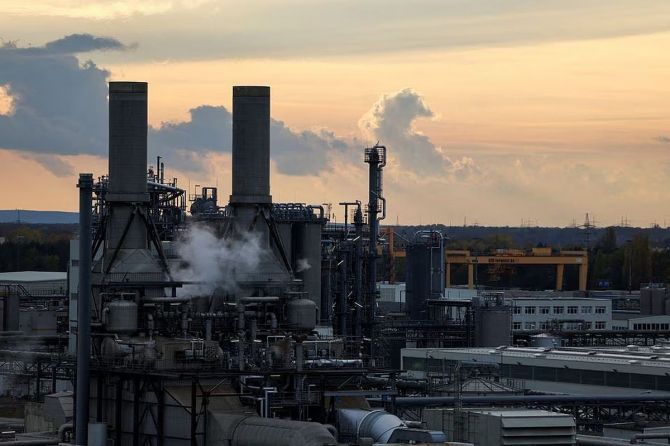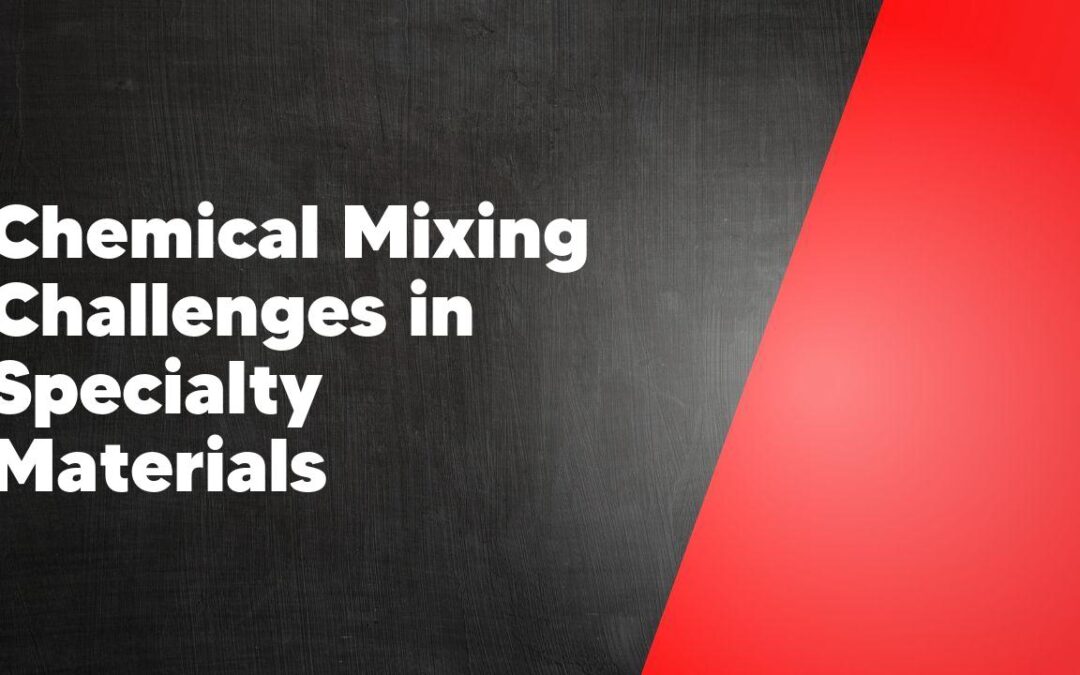This article explores the challenges faced when mixing chemicals in the production of specialty materials. From ensuring proper ratios to managing temperature and other variables, there are many factors that can impact the quality and consistency of the final product. By understanding and addressing these challenges, manufacturers can improve their processes and deliver high-quality specialty materials to their customers.
1. Understanding the Complexities of Chemical Mixing in Specialty Materials
Understanding the complexities of chemical mixing in specialty materials has always fascinated me. As a chemist, I have always been intrigued by how different substances can come together to create unique properties and functions. Whether it’s mixing pigments to create vibrant colors in paint or blending polymers to create strong and flexible plastics, the process of chemical mixing plays a crucial role in the development and production of specialty materials. However, it is not a simple task. It requires careful consideration of various factors such as compatibility, reactivity, and concentration. By gaining a deep understanding of these complexities, we can unlock the potential for creating innovative materials that have a wide range of applications in industries such as aerospace, automotive, electronics, and more.
2. Factors Influencing the Efficiency and Effectiveness of Chemical Mixing

When it comes to chemical mixing, there are several factors that can greatly impact its efficiency and effectiveness. Firstly, the equipment used plays a crucial role. Having high-quality mixing equipment is essential to ensure thorough blending of chemicals. Additionally, the operator’s skill and expertise are important factors to consider. A knowledgeable and experienced operator is capable of adjusting the mixing process according to the specific requirements of each chemical, thereby ensuring optimal results. Furthermore, the properties of the chemicals being mixed must also be taken into account. Factors such as viscosity, density, and reactivity can all affect the mixing process. Therefore, it is important to carefully analyze these properties and make necessary adjustments to the mixing parameters. Overall, understanding and addressing these factors is key to achieving efficient and effective chemical mixing.
3. Overcoming Challenges in Achieving Homogeneous Blends in Specialty Materials
In my experience working with specialty materials, one of the biggest challenges I have encountered is achieving homogeneous blends. Specialty materials often consist of multiple components that need to be thoroughly mixed together in order to achieve the desired properties. However, due to the different characteristics and particle sizes of these components, achieving homogeneity can be quite difficult. It requires careful formulation and processing techniques to overcome this challenge. Through trial and error, I have learned various strategies to improve the blending process, such as using specific mixing equipment and adjusting processing parameters. Overcoming these challenges is crucial in order to produce consistent and high-quality specialty materials that meet the unique requirements of different applications.
4. Ensuring Consistent Quality Control in Chemical Mixing Processes
When it comes to chemical mixing processes, ensuring consistent quality control is paramount. As someone who has been in the industry for over a decade, I have seen firsthand the importance of maintaining strict quality standards. From obtaining high-quality raw materials to implementing rigorous testing protocols, every step of the process must be carefully monitored. Additionally, having a team of highly skilled and trained professionals is essential to achieving consistent results. Regular audits and inspections also play a crucial role in maintaining quality control. By adhering to these practices, we can ensure that our chemical mixing processes consistently meet the highest standards of quality and safety.
5. Innovations and Technologies for Improved Chemical Mixing in Specialty Materials
In my opinion, one of the most exciting aspects of working with specialty materials is the constant advancements in technology and innovation that are improving chemical mixing processes. As a chemist, I am always on the lookout for new tools and technologies that can help me achieve better results and create superior products. Over the years, I have witnessed incredible developments, such as the use of advanced mixing systems and automated software to ensure precise control over the mixing process. These innovations not only enhance the efficacy of the chemical reactions but also save time and resources. With the continuous advancements in this field, I am optimistic about the future of specialty materials and the potential they hold for various industries.
6. Best Practices and Strategies for Successful Chemical Mixing in Specialty Materials Production
As a specialty materials producer, I have learned that there are several best practices and strategies that are crucial for successful chemical mixing. Firstly, it is important to carefully measure and mix the chemicals in the right proportions. This ensures uniformity and consistency in the final product. Additionally, thorough training and understanding of the mixing equipment is essential. It is important to know the capabilities and limitations of the equipment to ensure optimal mixing conditions. Regular maintenance and calibration of the equipment is also a critical aspect of successful chemical mixing. Finally, it is crucial to continuously monitor the mixing process and make necessary adjustments in real-time to ensure the desired product quality. By following these best practices and strategies, my specialty materials production has seen significant improvements in the quality and consistency of our products.
Conclusion
In conclusion, the challenges of chemical mixing in specialty materials are significant and require careful consideration. The complexity of these materials and the need for precise ratios and processes can lead to issues such as inconsistent product quality and even safety hazards. However, by understanding the specific requirements of each material and implementing proper mixing techniques, these challenges can be effectively addressed and overcome.
1. What are some common challenges encountered in chemical mixing of specialty materials?
Some common challenges encountered in chemical mixing of specialty materials include issues with uneven distribution, poor solubility, chemical incompatibility, and difficulties in achieving desired viscosity.
2. How can uneven distribution be addressed during chemical mixing of specialty materials?
Uneven distribution can be addressed by using appropriate mixing equipment, such as high-shear mixers or homogenizers, and ensuring thorough blending of all components.
3. What can be done to overcome poor solubility in specialty materials mixing?
To overcome poor solubility, it may be necessary to adjust the processing conditions, such as temperature or pressure, use solvents or additives to enhance solubility, or consider alternative mixing techniques.
4. What are some strategies to handle chemical incompatibility during specialty materials mixing?
Strategies to handle chemical incompatibility include conducting compatibility testing prior to mixing, selecting compatible materials of construction for mixing equipment, and employing proper mixing techniques to minimize reaction risks.
5. How can difficulties in achieving desired viscosity be resolved during specialty materials mixing?
Difficulties in achieving desired viscosity can be resolved by adjusting the formulation of the specialty material, optimizing the mixing process parameters, or incorporating viscosity modifiers or thickeners.
6. Are there any safety considerations to keep in mind when working with specialty materials?
Yes, it is important to follow appropriate safety guidelines, such as wearing protective gear, working in a well-ventilated area, and properly storing and handling specialty materials to minimize potential hazards and ensure worker safety.

